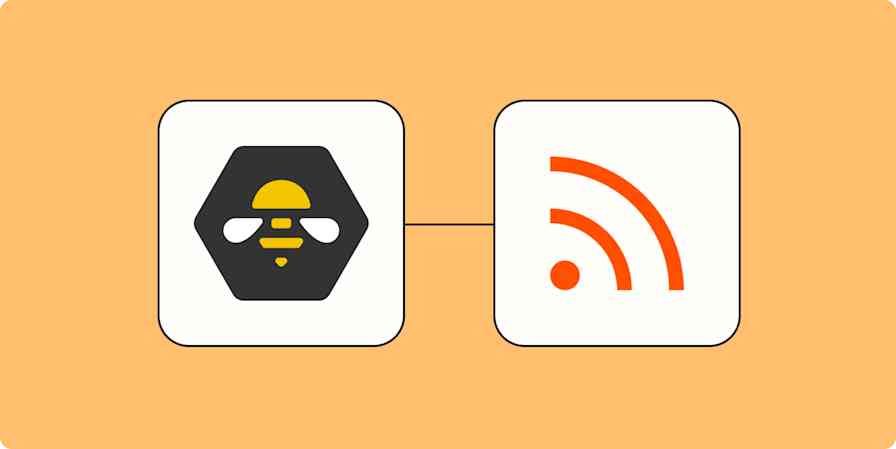Though it takes time and resources to produce a good video, that effort helps you stand out. An engaging video on Twitter could be widely shared, and a YouTube series could generate traffic for years to come. The key is making sure you get returns for the investment you make and save time where possible.
Don't waste time on the tedious tasks associated with archiving, promoting, or transcribing your video pieces. Set up some automated workflows—we call them Zaps—that make your tools work together. With your actions automated, you can focus on making the best video content to help your brand stand out.
We've included some pre-made Zaps—what we call Zap templates—throughout this piece to get you started. Just click on the button, and we'll guide you through customizing it. It only takes a few minutes. You can read more about setting up Zaps here.
Automatically upload to and from your archive
We all know archiving is necessary—who wants to lose hours of footage and the hard work of numerous people? But actually doing the uploading is tedious, repetitive, and, more often than not, entirely manual.
But archiving doesn't have to be a pain point. Automation can turn your archival tool of choice into an efficient, effective part of your video content toolbox.
Use these automated workflows to upload or link your content to a cloud storage service as soon as you finish it.
Add YouTube videos matching searches to Dropbox text files
Upload files to MediaSilo Legacy and create copies in Dropbox
You can even reverse this process and start with the archiving step. If security is your top priority, use these automated workflows instead. Upload to your archival service first, and have your automated workflow handle the publishing process.
Automatically upload videos to Wistia from Google Drive
Share and cross-promote your content automatically
After putting hours into your video or playlist, the last thing you want to do is spend precious time posting it on every social media channel. Your time is better spent on content. Let automation handle all the uploading.
Use these workflows to send video content to your social media pages instantly, so your followers can find your work as soon as it's ready.
Send new YouTube videos in a channel to a Facebook Page
You can also automatically post videos to your website, saving you the work of creating a new post every time.
Pressing upload on a video, however, doesn't have to mean you share it at the same time. For instance, a gym might want to encourage its audience with #MondayMotivation videos. Those videos are a whole lot less effective if they go out on Tuesday or Wednesday. Instead of waiting to manually upload videos on Monday, let automation schedule them for you.
These automated workflows send your videos to social media management tools like Buffer. That way, you can create a slew of #MondayMotivation videos at once, upload them, and schedule them weeks ahead. One upfront time investment pays off with weeks of perfectly timed content.
Add new YouTube videos to your Edgar content library
Post new Youtube videos to your social networks with Hootsuite
To give your content the first initial promotion spike it needs, get your team involved. When you publish a new video, your teammates should be the first people sharing and commenting. The right encouragement, paired with tools that make it easy, can turn your teammates into social media ambassadors. They can interact with commenters, share the videos on their personal accounts, and give your content a human touch.
Integrate your video publishing tools with your communication tools, so your team knows to promote every piece of content as it's published.
Send notifications via Gmail for new YouTube channel videos
Send new Slack messages for new videos on your Vimeo account
Send emails through Gmail for new Vimeo videos you publish
Transcribe your videos automatically
Transcribing your videos is not only necessary to make sure your content is accessible, but it can also boost its performance by making it more SEO-friendly. Since video content doesn't have text that Google can crawl, it can be more difficult to rank on keywords related to your video topic. A video transcript can make it easier for Google—and your readers—to understand what the video is about.
If you regularly transcribe your videos, you likely work with a transcription app or service. Setting up automated workflows between your transcription app and the other tools you use can help you streamline your entire transcription production process.
Start off by automatically submitting new videos to your transcription app with one of these workflows:
Create Rev transcription orders from new Dropbox files
Create Trint transcriptions from new Twilio recordings
Create Descript transcript from new OneDrive files
With a paid Zapier plan you can also set up a multi-step Zap. This more advanced workflow allows you to automatically add your video to YouTube and send it to your transcription service when you add a new video to Google Drive.
Upload new videos in Google Drive to YouTube and Trint
Once you receive your transcripts, you can also automatically save them wherever you store your content.
Once you've sent in your video for transcription and gotten it back, you also need to do something with it. Get alerted in your team's chat app or by email, so you know the transcript is completed and ready to add to a blog post or the video's description.
Send a Slack channel message when a Trint transcript is ready
Send outbound emails when Descript transcripts are ready
Get a Slack message when Temi finishes transcribing your files
Video integrations make your tools work harder
Your video content will only reach its potential if people can see and interact with it. Zapier ensures that your audience and your team can easily stay up to date—all without your manual effort. With these automated workflows, you can get much greater returns with far less work.





